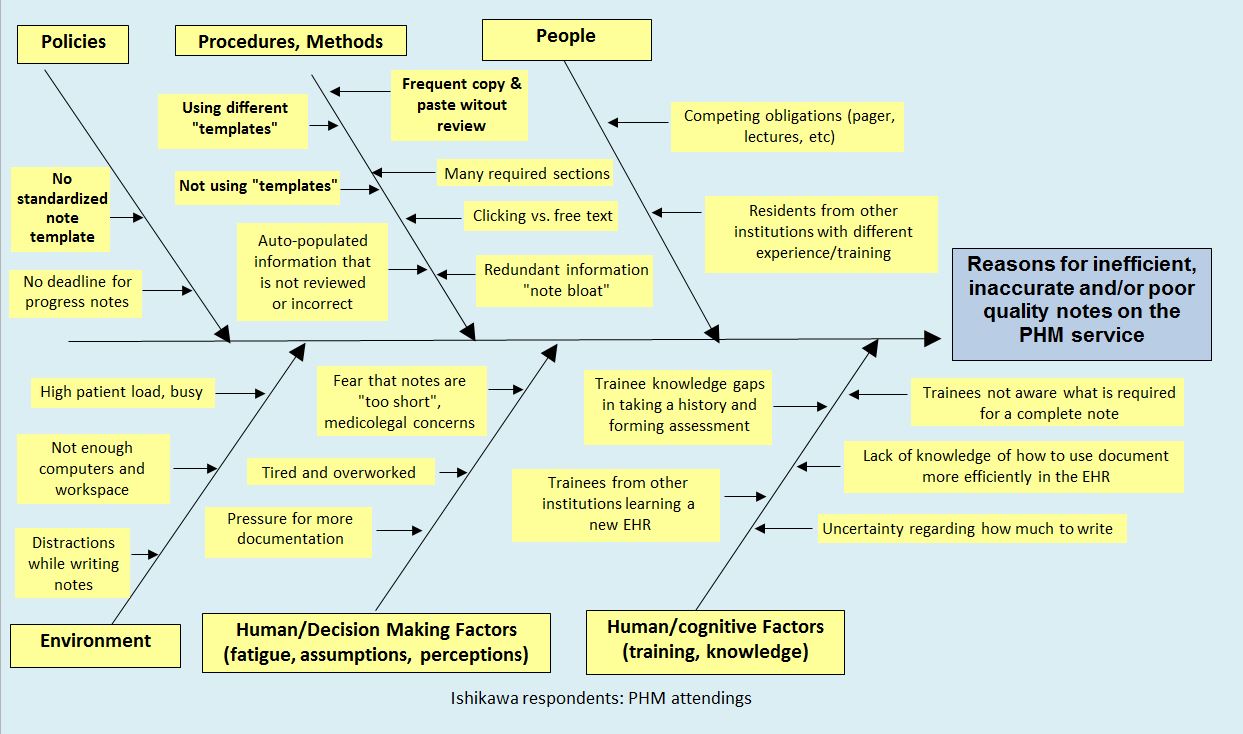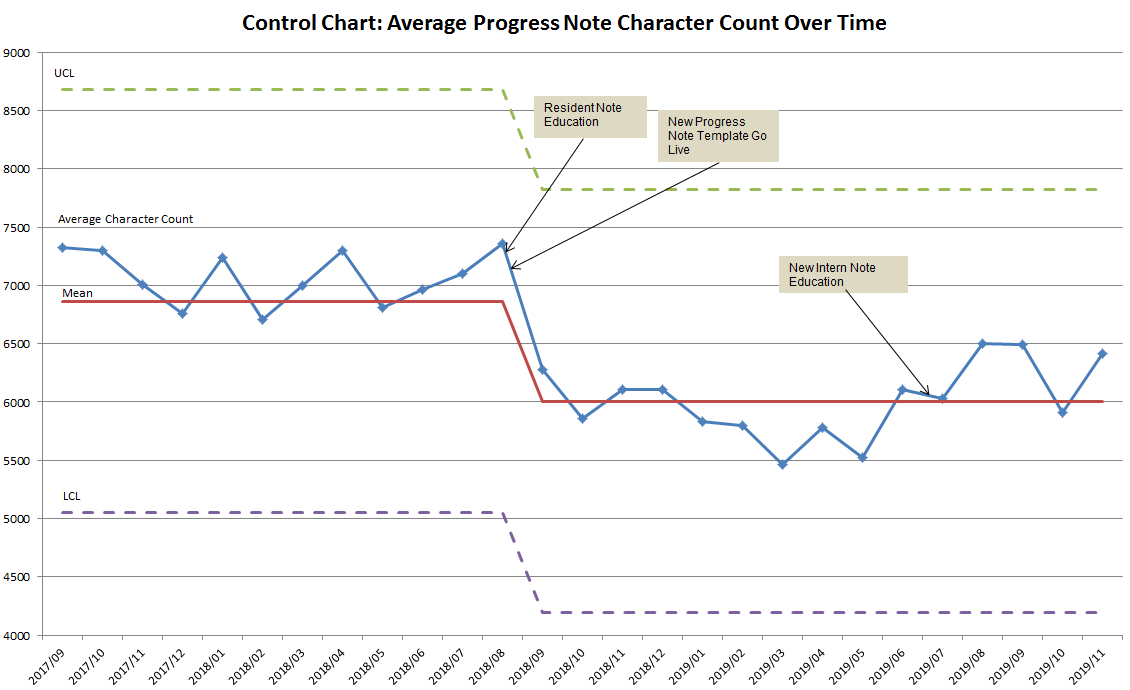Background: Despite the benefits of electronic health records, they have propagated lengthy and redundant notes. At our tertiary care pediatric hospital with a high degree of trainee turnover we identified high variability in documentation in our pediatric hospital medicine (PHM) progress notes with significant note bloat. We aimed to standardize and shorten the length of progress notes utilized by physicians by increasing progress note template utilization to 80% and decreasing note length by 10% within 12 months.
Methods: We created an interdisciplinary team (physicians, medical informaticists, a clinical documentation specialist, billing specialist, and Chief Medical Informatics Officer), and performed a literature review and a targeted needs assessment (Figure 1). With key stakeholder input, we created a progress note template that included reduction of auto-pull data and built-in help text to guide trainees. The note template went live after a resident education session on 9/7/2018. Metrics: Note length as measured by character count, and template utilization measured by percentage. Number of coding queries served as a balancing measure for note quality; we accounted for the average length of stay (LOS), number of hospital problems per patient at discharge, and diagnosis related groups (DRGs) to observe changes in the complexity of our patient population.
Results: Post intervention, note length decreased by an average of 860 characters per note (8679 to 7819), a ten percent reduction (Figure 2). This reduction occurred despite an overall per patient increase in the number of hospital problems, LOS, and DRGs, indicating increased patient complexity over time. Note template utilization increased from a baseline average of 68% to 83%. The average number of coding queries decreased from 50 to 38 queries on average per month.
Conclusions: Our interdisciplinary team successfully increased progress note template utilization and decreased note length without an increase in coding queries. Buy-in and input from key stakeholders and increased note usability were important features in our success. Next steps include resident and attending education on note content and quality.


